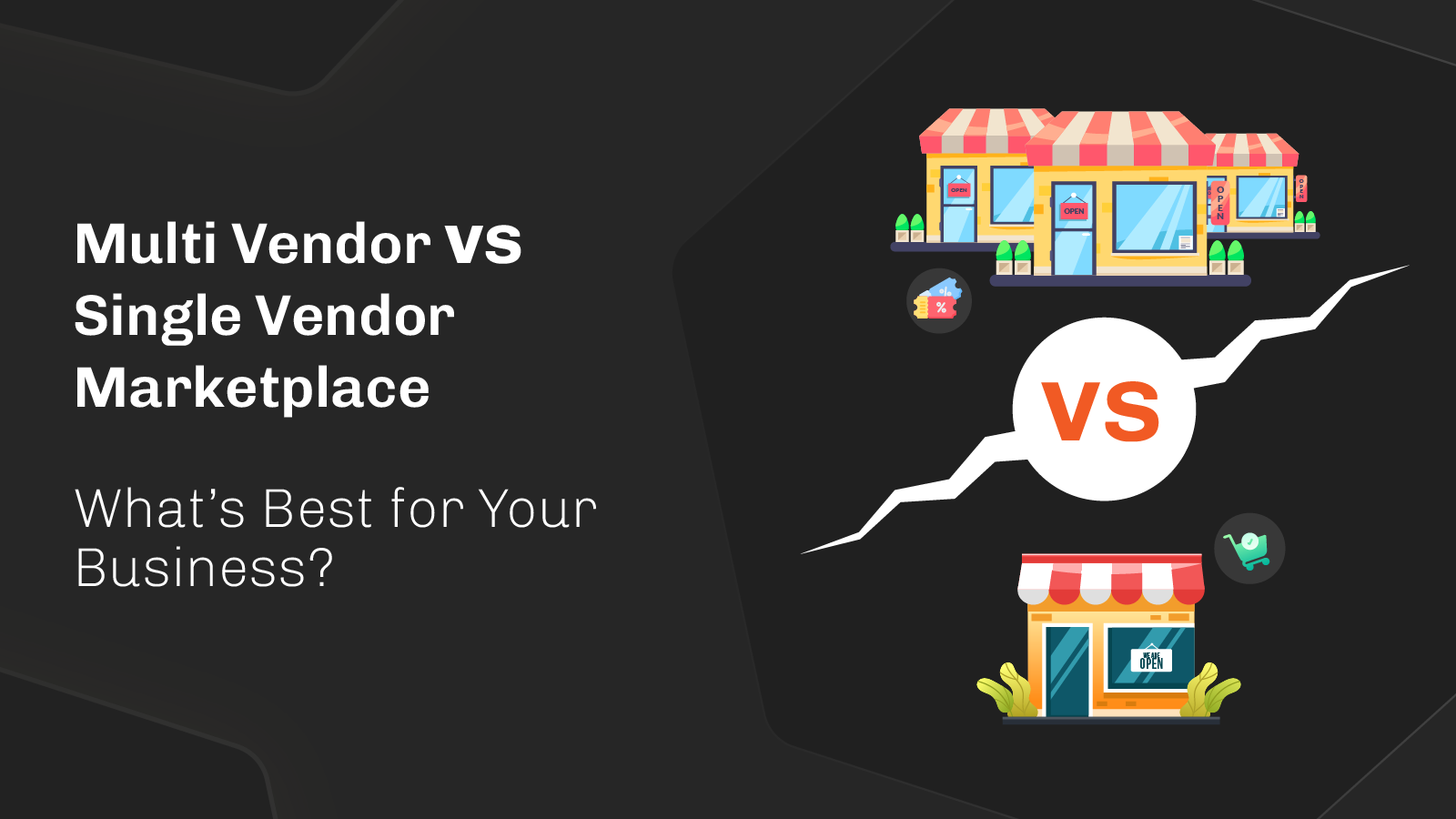Did you know that global eCommerce sales rocketed to a jaw-dropping $5.8 trillion? This number shows the extreme tendency of starting an eCommerce business. However, launching an eCommerce website is like baking a cake—get one ingredient wrong, and the whole thing could collapse. So it has to be perfectly executed.
I believe you’ve already done the hard part- building an eCommerce website. Now it’s time to launch the website. But fear not, I’ve got your back.
We’re diving into proven checklist for a good ecommerce website launch. So, dust off your keyboard and ensure your site can handle traffic spikes without breaking a sweat. After all, bugs are cute, but not on your website.
Let’s roll up those sleeves and launch your website that lands on Mars!
What is an eCommerce Checklist?
Imagine you’re about to open a fancy online store. But hold on! You can’t just jump in blindly. An eCommerce checklist is like your personalized roadmap for this digital journey. It’s a compilation of to-dos that guide you before your grand store opening.
Picture it this way: you’re the captain of an eCommerce ship, and this checklist is your navigation chart. It tells you what needs fixing, what needs creating, and what needs polishing before you launch. This checklist is your co-pilot.
So, before you shout, “Ahoy, shoppers!” remember to check off each item on your eCommerce checklist. It’s like ensuring your ship has no leaks before it sails on the vast online ocean.
Checklist to Verify Before Launching an eCommerce Website
We’re all checklist champs for shopping, traveling, and more. They’re like safety nets for not missing steps. Just like that, an eCommerce checklist is your launch guard, ensuring your online store launches successfully.
| Stage | Topic | Sub-Topic |
Pre-launch | Take Preparation | – Set up a Development and Staging Environment – Double-Check Server and Hosting Configurations – Ensure Website Responsiveness Across Devices |
| Check Design | – Visual Brand Identity – Clear Call-to-Action (CTA) – Easy Cart and Checkout – Retina Logo and High-Quality Visuals | |
| Website Functionality | – Test Browsing, Searching, and Filtering Products – Check the Shopping Cart and Checkout Process – Verify Payment Gateway Integration – Check the Coupon & Shipping Functionalities – Validate Order Confirmation and Email Notifications | |
| User Experience | – Test Website Navigation and User Flow – Ensure Clear and Concise Product Descriptions – Optimize Images and Videos for Faster Loading – Verify Mobile-Friendliness and Touch Responsiveness | |
| Performance Optimization | – Minimize CSS and JavaScript Files – Enable Browser Caching and GZIP Compression – Conduct Load Testing to Handle Traffic Spikes | |
| Security Measures | – Implement SSL Certificate – Set Up Firewall and Intrusion Detection Systems – Regularly Update CMS, Plugins, and Frameworks – Conduct Security Audits and Penetration Testing – Spam Filtration & Use Strong Passwords | |
| SEO | – Optimize Meta Tags, Titles, and Descriptions – Create a Sitemap and Submit it to Search Engines – Implement Clean and SEO-Friendly URLs – Ensure Fast Loading Times for Better Search Rankings | |
| Accessibility | – Check Website for Accessibility Compliance (WCAG) – Implement Alt Text for Images and Proper Headings – Test Keyboard Navigation and Screen Reader Compatibility | |
| Legal and Compliance | – Include Privacy Policy, Terms of Service, and Refund Policy – Ensure Compliance with Data Protection Laws – Verify Cookie Acceptance Techniques | |
| Post-launch | Testing and QA | – Perform a Thorough Cross-Browser Testing – Test on Various Devices and Screen Sizes – Check for Broken Links and 404 Errors – Review and Refine the User Interface |
| Backup and Recovery | – Regularly Back Up Website Files and Databases – Have a System Failure Recovery Plan in Place – Test Backup Restoration Process | |
| Analytics and Tracking | – Set Up Google Analytics or Other Tracking Tools – Verify Event Tracking for Conversions and Goals |
Here is the checklist you must check before launching an online store:
Take Preparation
This phase is like tuning an instrument before a performance. It ensures that every technical aspect is finely tuned and ready to deliver an exceptional user experience. Failing to prepare your eCommerce appropriately can result in performance issues, bugs, and a negative user perception – all of which can impact your website’s success.
Now let’s find out the key elements of the Pre-Launch Preparation stage:
Set up a Development and Staging Environment
Create a separate environment for development and testing. This ensures that any changes or updates don’t disrupt the live site. Developers can work on new features and fixes without affecting the user experience.
Double-Check Server and Hosting Configurations
Review server specifications and hosting settings to ensure they meet the website’s requirements. Ensure that server resources are sufficient to handle anticipated traffic levels. Address any server-related issues to prevent slowdowns or crashes during launch.
Ensure Website Responsiveness Across Devices
Test the website’s responsiveness on various devices like smartphones, tablets, and desktops. The design should adapt seamlessly to different screen sizes and orientations. This enhances user experience and caters to the diverse preferences of your audience.
Taking the time to prepare before launching your eCommerce website is crucial. It sets the stage for a flawless performance. This leaves your audience impressed and eager to explore what you offer.
Check Design
Design isn’t just about aesthetics; it’s about creating a user experience that resonates. A well-designed website communicates professionalism, builds trust, and guides users through their journey. It makes them more likely to convert into loyal customers.
Let’s check the essential components of this phase:
Visual Brand Identity
Ensure that your website’s design aligns seamlessly with your brand’s visual identity. Consistent color schemes, typography and images strengthen brand recognition and resonate with your target audience.
Clear Call-to-Action (CTA)
Design CTAs that stand out and guide users towards desired actions. Use contrasting colors, compelling text, and strategic placement. It encourages visitors to add products to their cart, subscribe to newsletters, or explore more.
Easy Cart and Checkout
Design an intuitive shopping cart and checkout process. Make it easy for users to review their selected items, modify quantities, and proceed to payment without confusion or distractions.
Retina Logo and High-Quality Visuals
Use high-resolution visuals, including a retina logo, to ensure crisp and clear images on all devices. A visually appealing website leaves a lasting impression on users and enhances overall aesthetics.
By prioritizing design, you’re not just creating a website but crafting a captivating digital space that leaves a lasting impression. Your attention to branding, user-friendly elements, and high-quality visuals elevates your eCommerce venture into a memorable online destination.
Website Functionality
Your website’s functionality is the backbone of user experience. It’s what turns visitors into satisfied customers. If your site’s features don’t work as expected, customers might become frustrated and abandon their shopping journey.
Imagine your eCommerce website as a well-oiled machine, where every part works perfectly to provide a seamless shopping experience. The “Website Functionality” section focuses on fine-tuning each and everything that powers your site’s core features.
Here are the essential elements of this phase:
Test Browsing, Searching, and Filtering Products
Ensure customers can easily navigate through your products, search for specific items, and apply filters to refine their search. A user-friendly search and navigation system enhances the browsing experience and helps customers quickly find what they’re looking for.
Check the Shopping Cart and Checkout Process
Thoroughly test the shopping cart functionality and the checkout process. Ensure that customers can add items to their cart, view their cart contents, and smoothly proceed through the checkout steps. Any hiccups here could lead to abandoned carts and lost sales.
Verify Payment Gateway Integration
Test payment gateway integration to confirm that customers can complete transactions using various payment methods. Ensure that payment information is securely processed and that customers receive proper payment confirmation.
Check the Coupon & Shipping Functionalities
Test coupon code functionality for discounts or promotions. Ensure that shipping options and costs are displayed transparently and that users can select their preferred method.
Validate Order Confirmation and Email Notifications
Customers should receive accurate order confirmations and email notifications when a purchase is made. Test these notifications to ensure they contain the correct information and are delivered promptly.
By carefully checking and refining every aspect of your eCommerce website’s functionality, you’re not just creating a website – you’re crafting a reliable and enjoyable shopping experience that customers will remember and return to.
User Experience
User experience is the heart of customer satisfaction. A seamless, easy-to-navigate website keeps users engaged and encourages them to explore further. If users enjoy their time on your site, they’re more likely to convert into paying customers and even become repeat buyers.
Let’s explore the key components of this phase:
Test Website Navigation and User Flow
Navigate your website as if you were a customer. Ensure that the navigation menus, buttons, and links guide users smoothly through the site. Intuitive navigation helps users find what they want without frustration.
Ensure Clear and Concise Product Descriptions
Product descriptions should provide essential information clearly and concisely. Highlight key features, specifications, and benefits. Well-written descriptions help customers make informed purchasing decisions.
Optimize Images and Videos for Faster Loading
High-quality images and videos enhance product visibility, but they must load quickly to prevent user impatience. Compress images and videos to balance visual appeal and loading speed.
Verify Mobile-Friendliness and Touch Responsiveness
In the mobile era, ensuring your website is mobile-friendly is crucial. Test your website on various mobile devices to ensure it’s responsive and easy to use with touch gestures.
By focusing on creating an exceptional user experience, you’re setting the stage for strong customer loyalty and positive verbal marketing. Remember, a happy customer is more likely to return and recommend your website to others.
Performance Optimization
A fast-loading website contributes to a positive user experience. Users are more likely to engage, explore, and purchase on a site that responds quickly. Moreover, search engines consider page speed when ranking websites so that optimization can improve your site’s search visibility.
Here are the key aspects of this phase:
Minimize CSS and JavaScript Files
Clean up your website’s code by minimizing CSS and JavaScript files. This reduces the amount of data that needs to be loaded, improving overall page speed.
Enable Browser Caching and GZIP Compression
Browsers store static resources, such as caches, on users’ devices. It reduces the need to download them every time they visit your site. GZIP (GNU zip) compression further reduces file sizes for faster data transfer.
Conduct Load Testing to Handle Traffic Spikes
Simulate heavy user traffic to test how your website handles increased loads. This helps to identify performance bottlenecks and ensures your site can handle visitor spikes without slowing down or crashing.
By optimizing your website’s performance, you’re providing visitors with a seamless and efficient experience that encourages them to stay, explore, and convert. Remember, a few seconds can make a significant difference in the fast-paced digital world.
Security Measures
In an era where cyberattacks are prevalent, customer trust is built on a foundation of security. Securing your website safeguards your customers’ personal and financial information, instilling confidence in their online transactions.
Here are the checkpoints you must mark off for security measures:
Implement SSL Certificate
An SSL (Secure Sockets Layer) certificate encrypts data transmitted between your website and users’ browsers. This is especially important during checkout and login processes to prevent data interception.
Set Up Firewall and Intrusion Detection Systems
Install a web application firewall (WAF) to block malicious traffic and protect against common threats like SQL injection and cross-site scripting. Intrusion detection systems (IDS) help identify unauthorized access attempts.
Regularly Update CMS, Plugins, and Frameworks
Outdated software can be vulnerable to security breaches. Keep your content management system (CMS), plugins, themes, and frameworks up to date to patch vulnerabilities and improve security.
Conduct Security Audits and Penetration Testing
Perform regular security audits to identify weaknesses in your website’s code and configuration. Penetration testing involves simulating attacks to identify potential entry points for hackers.
Spam Filtration & Use Strong Passwords
Implement spam filtration mechanisms to prevent bots and spammy content from infiltrating your website. Additionally, check if your website has strong password policies for user accounts and administrative access.
Strengthening your eCommerce security isn’t just about shields and locks. It’s showing customers that you’ve got their back. Safety-first means you’re a privacy superhero, and a trustworthy site is a ticket to loyal customers.
SEO
Search engine optimization (SEO) increases your website’s visibility in search results, driving organic traffic to your site. Being easily discoverable by potential customers searching for your products can significantly impact your website’s success.
Let’s check the key components of this phase:
Optimize Meta Tags, Titles, and Descriptions
Create unique and relevant meta tags, titles and descriptions for each page. These concise snippets provide search engines and users with a glimpse of what your pages offer.
Create a Sitemap and Submit it to Search Engines
A sitemap is like a roadmap for search engines, helping them navigate and index your website’s content. Submit your sitemap to search engines like Google and Bing to ensure efficient crawling.
Implement Clean and SEO-Friendly URLs
Use descriptive, keyword-rich URLs that convey the content of each page. Avoid long, complex URLs that are difficult for both users and search engines to interpret.
Ensure Fast Loading Times for Better Search Rankings
Page speed is a ranking factor for search engines. Optimize images, scripts, and server settings to ensure quick loading times. It enhances both user experience and SEO.
By optimizing your website for search engines, you’re laying down a clear path for potential customers to find your online store easily. A strong SEO foundation ensures that your products and services are showcased to the right audience at the right time.
For SEO, you can use Google Search Console, Semrush, Screaming Frog, Ahrefs, Moz, Google Analytics, etc. These are some of the best SEO tools you can find to uplift your SEO game.
Accessibility
Web accessibility isn’t just a legal requirement; it’s a moral and practical necessity. It ensures that your website is usable by individuals with disabilities, broadening your potential audience and enhancing the user experience for all visitors.
Here are the key points that you must check for better accessibility:
Check Website for Accessibility Compliance (WCAG)
The Web Content Accessibility Guidelines (WCAG) provide standards for creating accessible websites. Review your website’s design, content, and interactions to ensure they align with these guidelines.
Implement Alt Text for Images and Proper Headings
Alt text provides a textual description of images, making them understandable to screen readers. Similarly, properly structured headings help users navigate content easily.
Test Keyboard Navigation and Screen Reader Compatibility
Ensure that users can navigate and interact with your website using only a keyboard. Test your site with screen readers to verify that they can interpret and relay content accurately.
Accessibility isn’t just ethics; it’s a spotlight on user-friendly design and care for all users. Make sure your eCommerce website checks this box.
Legal and Compliance
Following the law and industry norms shows your dedication to ethical business conduct and customer privacy. This fosters trust with customers and helps shield your business from legal problems. So, you must include the legal information on your website before launching it to the internet world.
Here are the crucial elements of this checkpoint:
Include Privacy Policy, Terms of Service, and Refund Policy
Create clear and comprehensive privacy policy, terms of service, and refund policy documents. These documents outline how you handle customer data, the terms of using your website, and your policies regarding refunds and returns.
Ensure Compliance with Data Protection Laws
If applicable, ensure that your website complies with data protection laws such as GDPR (General Data Protection Regulation). This includes obtaining approval for data collection and providing options for users to manage their data.
Verify Cookie Acceptance Techniques
If your website uses cookies, implement a method that informs users about the use of cookies. This allows them to provide approval or make choices about cookie preferences.
By prioritizing legal and compliance matters, you’re upbringing an environment of transparency and integrity. This not only protects your customers but also sets your eCommerce website on a path of ethical success.
Testing and QA
Mistakes and glitches can be harmful to your website’s reputation and drive potential customers away. Thorough testing and quality assurance mitigate these risks, ensuring that users experience a smooth, error-free journey.
Here are the key points that you must check for testing and quality assurance:
Perform a Thorough Cross-Browser Testing
Test your website on various web browsers (Chrome, Edge, Firefox, Safari, etc.) to ensure consistent functionality and appearance across different platforms.
Test on Various Devices and Screen Sizes
Use different devices (smartphones, tablets, laptops, desktops) and screen sizes. By doing so, you can verify that your website’s responsive design functions flawlessly across the board.
Check for Broken Links and 404 Errors
Scan your website for broken links and 404 (page not found) errors. Broken links can frustrate users and negatively impact SEO.
Review and Refine the User Interface
Evaluate the user interface (UI) to ensure that it’s intuitive, visually appealing, and aligned with your brand. Pay attention to details like typography, spacing, and color scheme.
Put your site through tough tests and show you’re all about top-notch quality. A seamless launch isn’t just user-friendly; it’s trust-building and loyalty-boosting.
Backup and Recovery
In the digital era, unexpected events like server failures, data breaches, or accidental errors can disrupt your website’s operations. A solid backup and recovery strategy ensures that you can easily restore your website and data. It minimizes downtime and potential losses.
Let’s check the vital elements of this checklist point:
Regularly Back Up Website Files and Databases
Create regular backups of your website’s files and databases. This ensures that you have a recent copy of your entire website, ready to be restored if needed.
Have a System Failure Recovery Plan in Place
Define a clear plan of action in case of a catastrophic event, such as a server crash, data breach, or website hack. This plan outlines steps for recovery and getting your website back online.
Test Backup Restoration Process
Regularly test the process of restoring your website from backups to ensure that the procedure works as expected. This helps you be prepared for any potential emergencies.
By establishing a strong backup and recovery system, you’re safeguarding your eCommerce website from the unpredictable. It’s a proactive step that reflects your dedication to providing uninterrupted service and protecting both your customers and your business.
Analytics and Tracking
Data-driven decisions are the foundation of successful eCommerce strategies. Analytics provide insights into what’s working, what needs improvement, and how users are interacting with your website.
Let’s explore the essential components of this phase:
Set Up Google Analytics or Other Tracking Tools
Implement a web analytics tool like Google Analytics to gather data on user activity, traffic sources, and more. This also allows you to monitor sales, revenue, and product performance, providing a comprehensive view of your business.
Verify Event Tracking for Conversions and Goals
Set up event tracking to monitor user actions on your website, such as purchases, form submissions, and clicks. This helps measure the success of your goals and conversions.
Use the combination of different analytics tools for a deep dive into customer journeys. See the sales path clearer and act smarter. It’s like having a compass and a map for the sales adventure. Dive deeper and find valuable insights that guide your success course.
Wrapping Up
Remember, the launch of your eCommerce website is just the beginning. It’s the starting point for continuous refinement, growth, and interaction with your audience.
By prioritizing aspects such as pre-launch preparation, functionality, performance, security, SEO, and user experience, you’ve set yourself up for a competitive edge in the ever-growing online marketplace. Best of luck on this exciting journey!
Thanks for reading this blog. Hope this blog saves you time and helps you launch your eCommerce website successfully. If so, don’t forget to share it with others. You know, sharing is caring!
Peace!
















